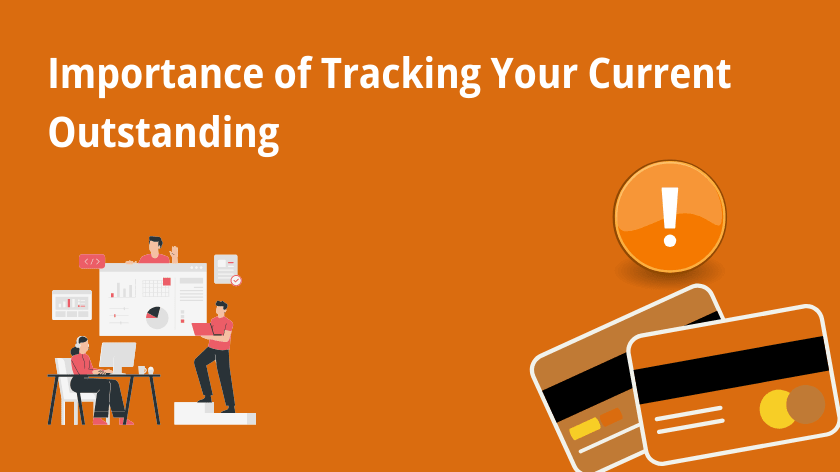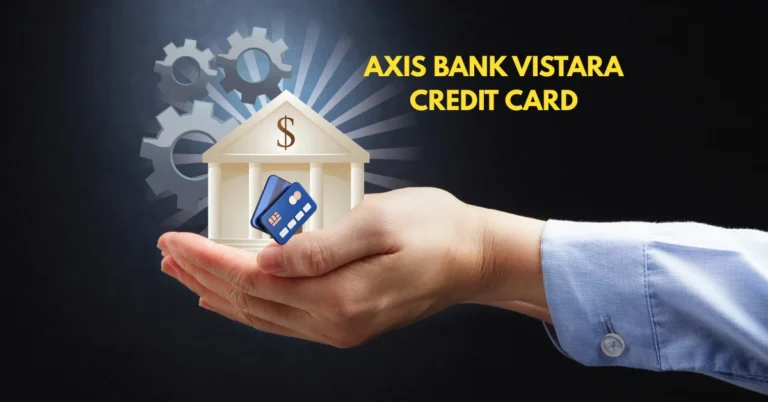What is Current Outstanding in Credit Cards?

The Current Outstanding in Credit Card is a common term that is widely used in the operations of most credit cards is the term “Current Outstanding in Credit Card.” This is one of the most crucial things you must understand about how to manage your credit and eventually your finances. The “Current Outstanding in Credit Card” simply means the amount of debt that you owe a credit card at any given time. Simply put, it is the amount of debt you are currently liable for. This would comprise of all your purchases, cash advances, balance transfers, and any interest or fees that have accrued.
To many people, understanding what is current outstanding in credit card is nothing short of confusing. Credit cards allow you to spend very easily without worrying about making payments immediately, but debt still accumulates for you to settle it. It helps to have this concept painted vividly if you want to stay out of many financial pitfalls and maybe even enhance your credit score.
This article will break down what “current outstanding” means, how it’s calculated, and why it’s important to keep track of it to maintain good financial health.
What is the Meaning of Current Outstanding in credit card?
Current outstanding is the “Current Outstanding in Credit Card” balance on a credit card. It is everything you owe as of the date of your statement. Here, include any items or services you bought using the credit card.
- Purchases: Any items or services you bought using your credit card. It’s also essential to differentiate between billed and unbilled amounts. If you’re unsure, here’s a helpful guide on what an unbilled transaction in a credit card.
- Cash Advances: Any cash taken from credit cards and added to the balance to be paid.
- Balance Transfers: All balances you have transferred from other credit cards are also added together.
- Interest: If you do not pay for your bill in full every month, interest will result from the remaining balance and will be added to your current outstanding.
- Fees: Any applicable fees, such as late payment fees, annual fees, or foreign transaction fees, or even fuel surcharge on credit cards, can be included in your outstanding balance.
Sum of all of the above elements will be your current outstanding balance. It’s the total sum that you owe to pay back to the credit card company.
How is Current Outstanding in Credit Card Calculated?
It is simple to determine your balance that exists as of now. Commonly, the balance is computed at the end of a billing cycle, and it comprises all of your credit card transactions, fees, as well as interest minus payments made.
Let’s break down the calculation:
- Start with your previous balance (the amount you owed from the last billing cycle).
- Add any new purchases or transactions made during the current billing cycle (this could include purchases, cash advances, or balance transfers).
- Include any interest charges that have accrued on your unpaid balance.
- Add any applicable fees, such as late payment fees or annual fees.
- Subtract any payments or credits applied to your account.
The outcome is your current outstanding balance. This number will appear on your monthly credit card statement, and it is the total amount you must pay back to prevent interest and other penalties from being added to your account.

Importance of Tracking Your Current Outstanding in Credit Card Balance
You will want to keep tabs on your current outstanding in credit card balance since it impacts many aspects of your life regarding money. Here are some specific reasons why:
- Helps You Monitor Spending: It can keep track of how much you are spending, and update your budget by keeping on top of your current outstanding balance. You would be amazed at how those small purchases add up quickly, and keeping on top of this balance helps you stay on budget.
- Prevents Over-Limit Fees: Most credit cards come with a spending limit. If the business card spends more than the limit, then there might be an over-limit fee levied. So by keeping track of your outstanding balance, you can make sure that you do not exceed your limit and therefore spare some dollars in fees.
- Avoids High-Interest Charges: The longer the balance is carried through with credit cards, the more interest has to be paid on that balance. By knowing what the current outstanding in credit card balance is and paying for this regularly, one can avoid having high interest charges.
- Credit Score Impact: The credit balance on your current outstanding in credit card directly influences your credit score. Having a significantly large balance consistently may suggest that you utilise credits highly, which impacts your credit score adversely. Credit usage responsibly, which is depicted by lesser balances, also helps in improving the credit score.
- Better Financial Planning: The current outstanding in credit card balance showcases an understanding of your current outstanding balances. This means that if you are aware of how much you owe, you can plan your payments effectively and ensure you do not fall into any debt trap.

Impact of Current Outstanding Balance on Credit Score
One of the most apparent reasons you should track your current outstanding in credit card balance is that the amount that will affect your credit score is your own. Credit card issuers always tend to report your outstanding balance to the credit bureaus and use such information to calculate your credit score.
Here’s how it affects your credit score:
- Credit Utilization Ratio: It refers to the ratio of how much credit you have used compared to the total credit allocated to you. With a higher outstanding balance, the credit utilization ratio will also be high. This works against a good credit score. It is said to be prudent and healthy that the credit utilisation should not exceed 30 percent of the total credit allocated to the account holder.
- Payment History: This is approximately 35 percent of your total credit score. As such, clearing your balance when it is due will help increase your credit score. However, missed payments or huge balances might drop your credit score.
All these will eventually lead to a better credit score over time-that is, if you keep your outstanding balance low, pay your bill on time, and reduce your credit utilisation ratio.
Tips for Managing Your Current Outstanding in Credit Card Balance
It’s possible to avoid debt in most aspects with the right balance of your current outstanding balance. Here are some tips on how you can stay on top of your balance:
- Pay Off the Full Balance Each Month: When you pay the full outstanding balance on credit cards, you keep all interest charges at bay. This is always the best policy because it precludes carrying any debt forward to the next period, and you will not be charged for usage of your credit.
- Set Up Payment Reminders: Card issuers should have such settings within apps or via their email. These reminders will assist in remembering the due date for payment in order to avoid late payment charges, thereby saving that person money and a reduction of negative impact on their credit score.
- Make More Than the Minimum Payment: If you can’t pay off your entire balance, aim to pay more than the minimum required payment. This will help reduce your debt faster and save you money on interest in the long run.
- Monitor Your Spending: Regularly check your current outstanding balance and spending habits. This will help you stay within your budget and avoid overspending.
- Consider a Balance Transfer: If you have a huge balance on a card with a very high-interest rate, now is the time to transfer that balance over to a card at a lower rate. Balance transfer credit cards can be your saviour in getting you out of debt quicker by reducing the actual interest you pay on your card.
Read More:
Conclusion
Understanding and keeping track of your outstanding balance is crucial for healthy finances. You should track your spending, make your payment on time, and ensure your balance is low to avoid debt and keep your current outstanding in credit card score safe. Responsible usage saves interest and fees while putting in a good foundation for the future.






